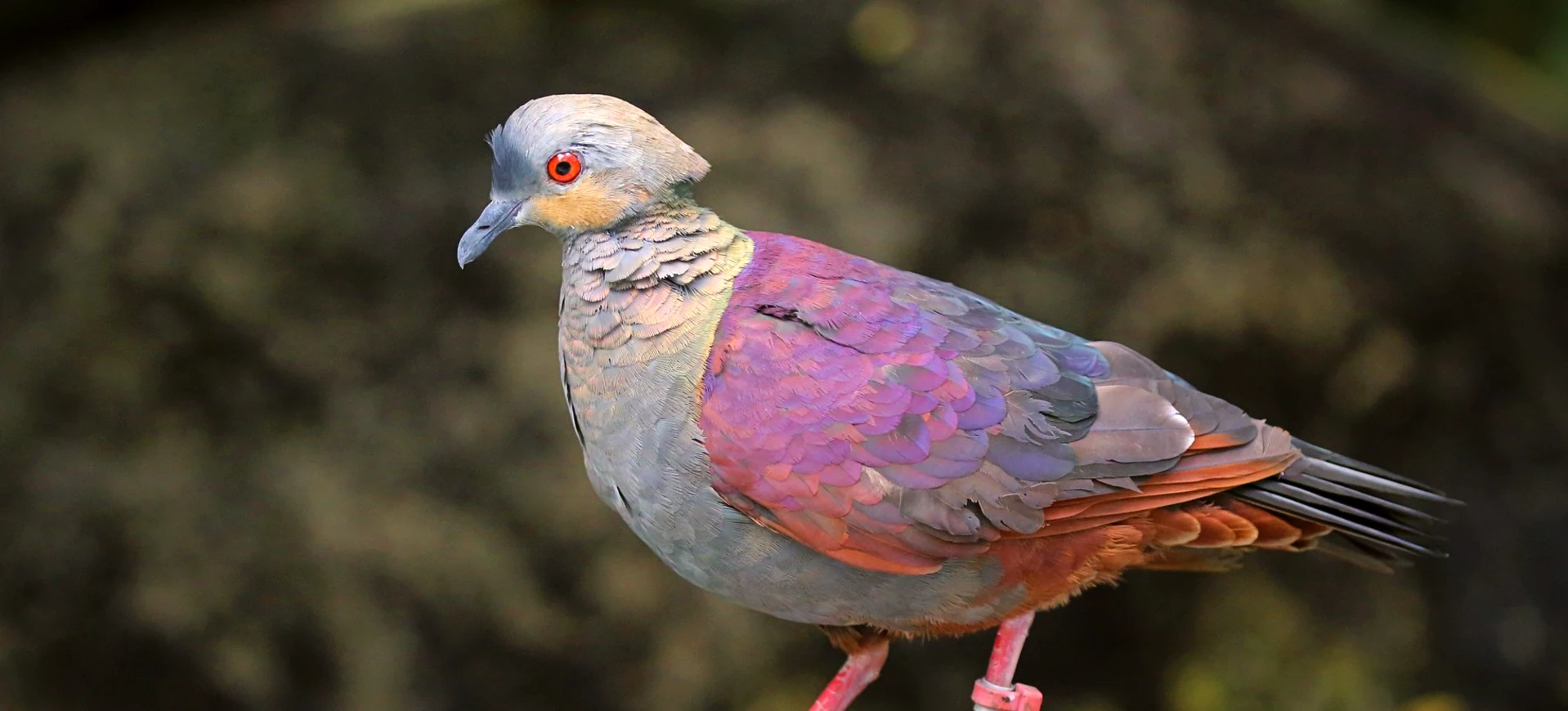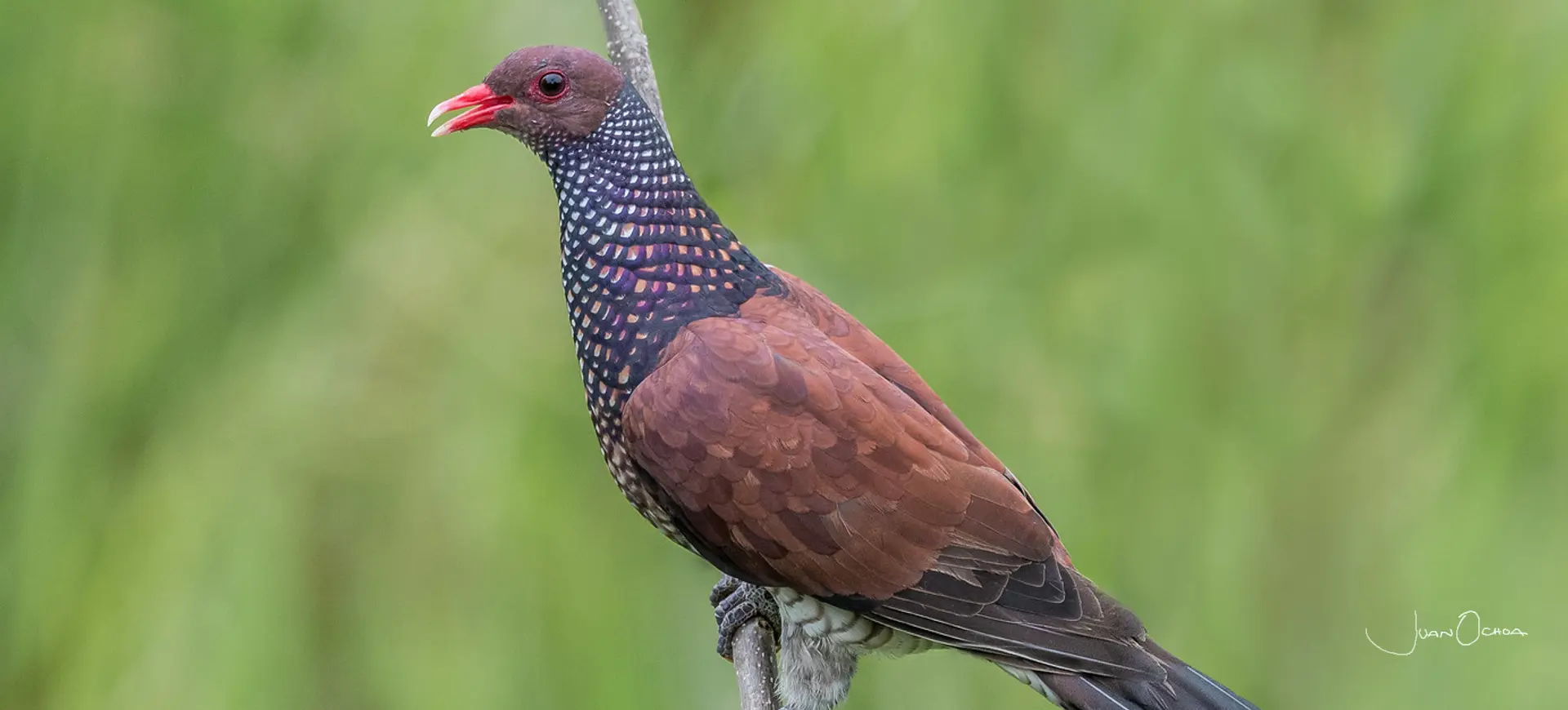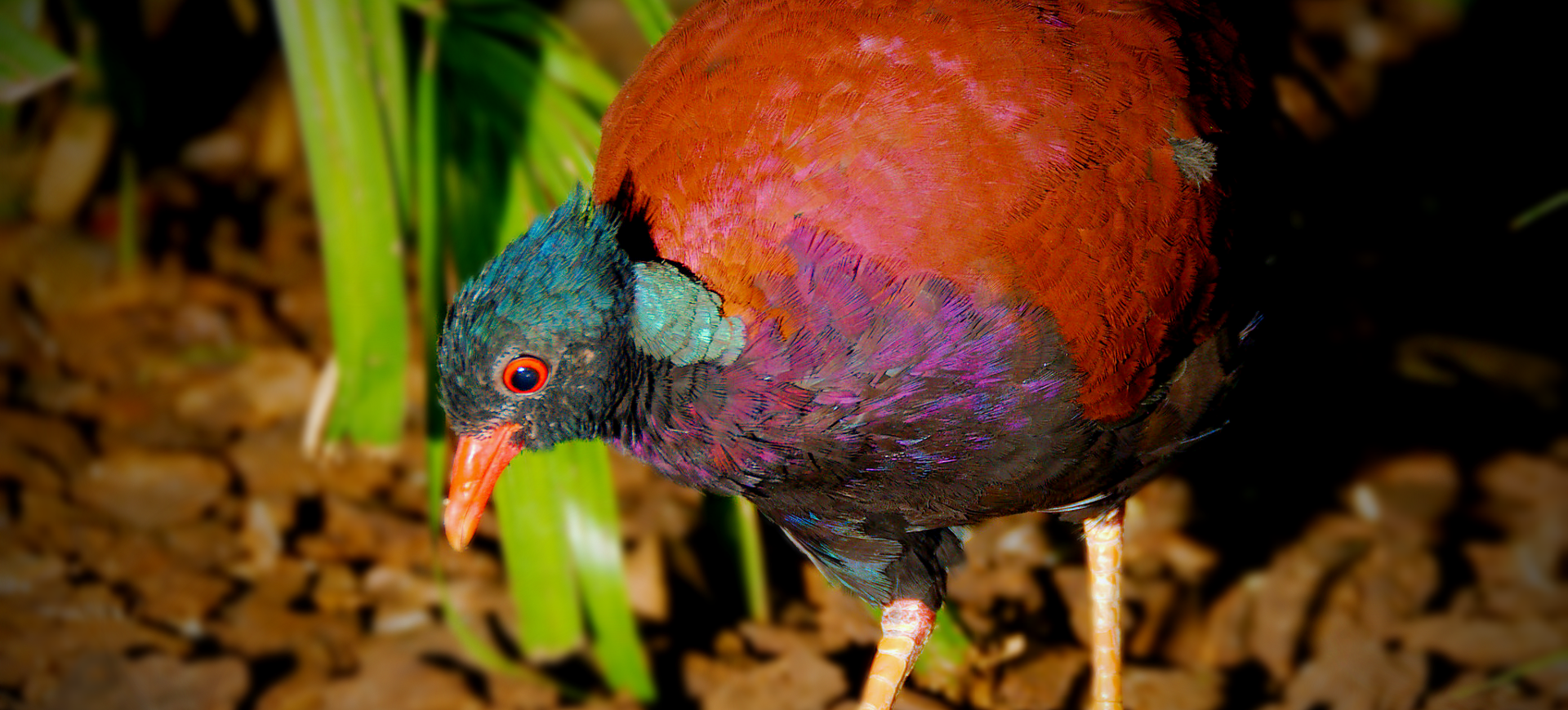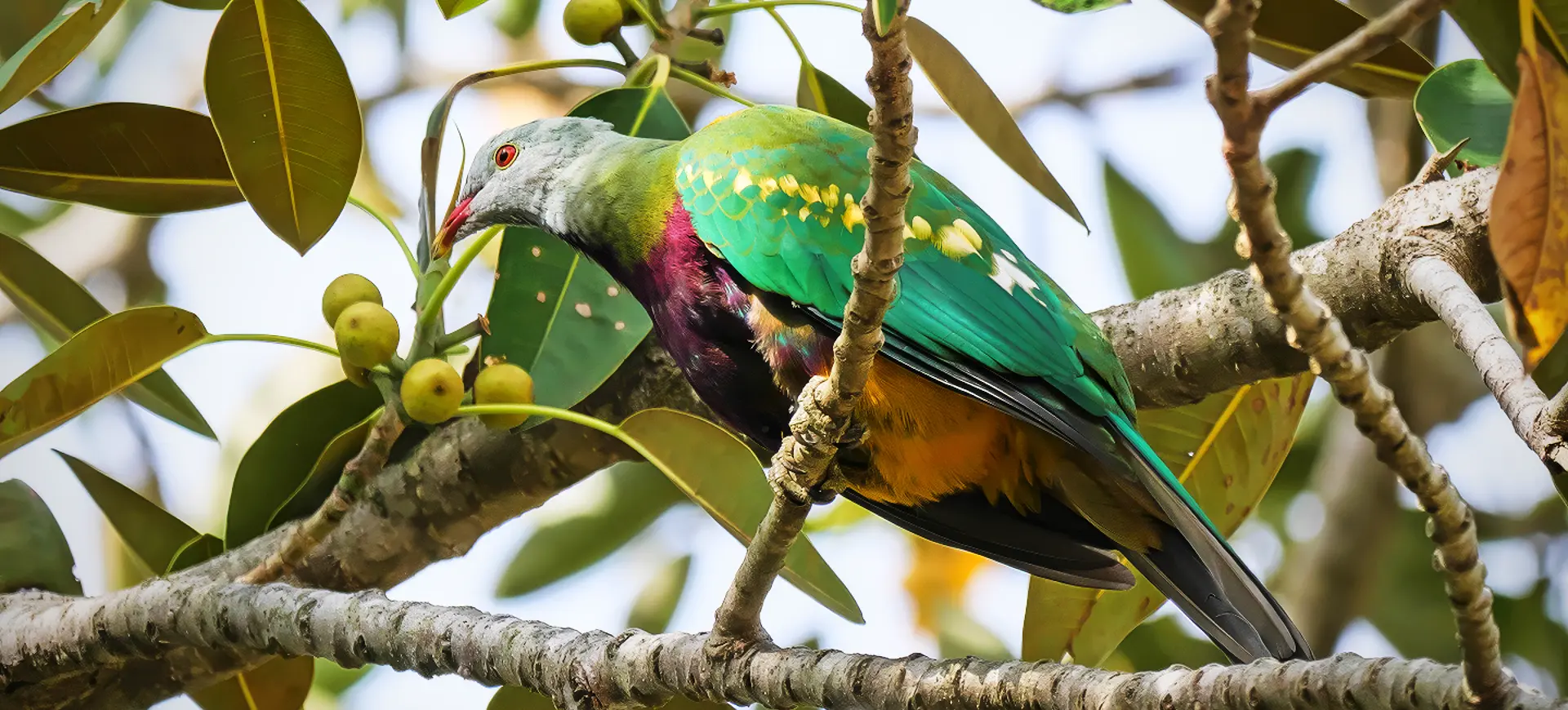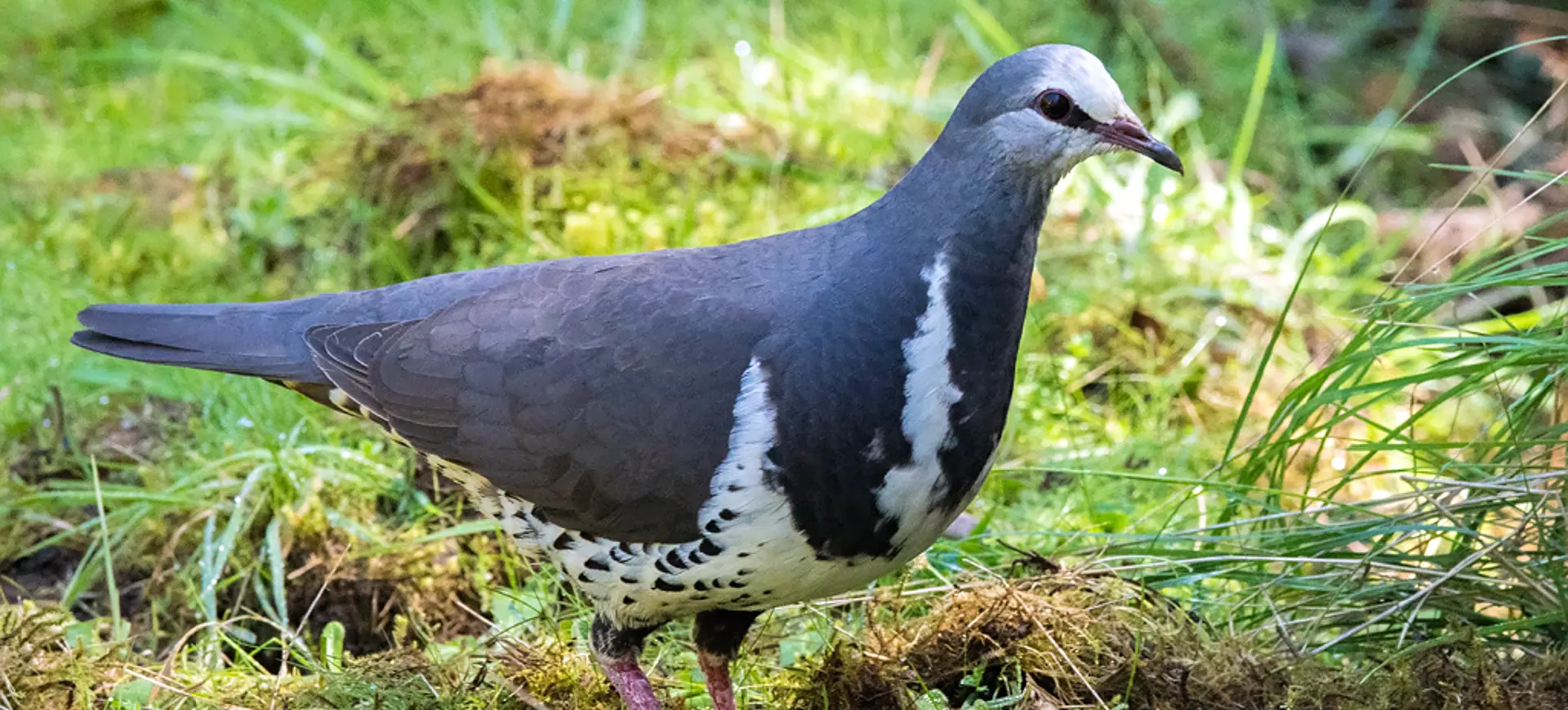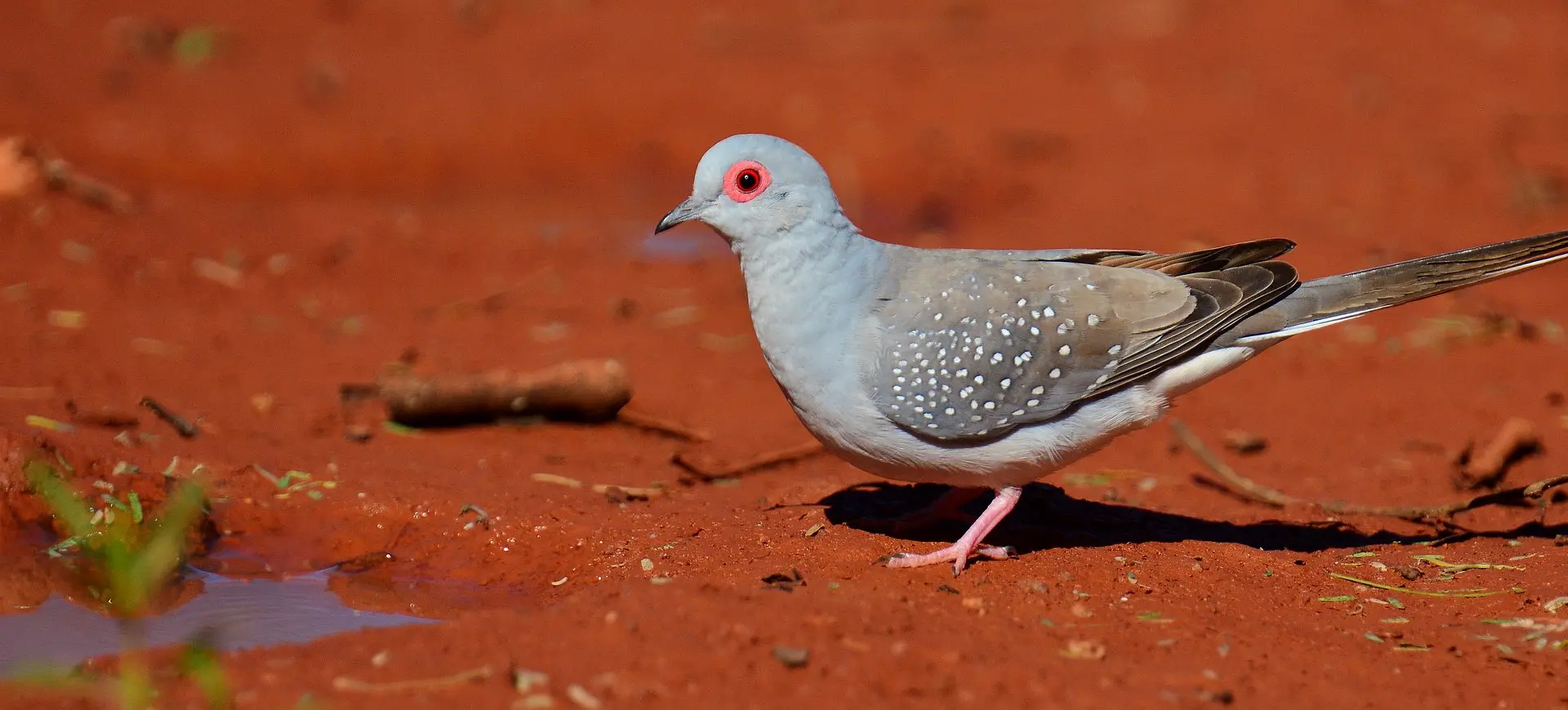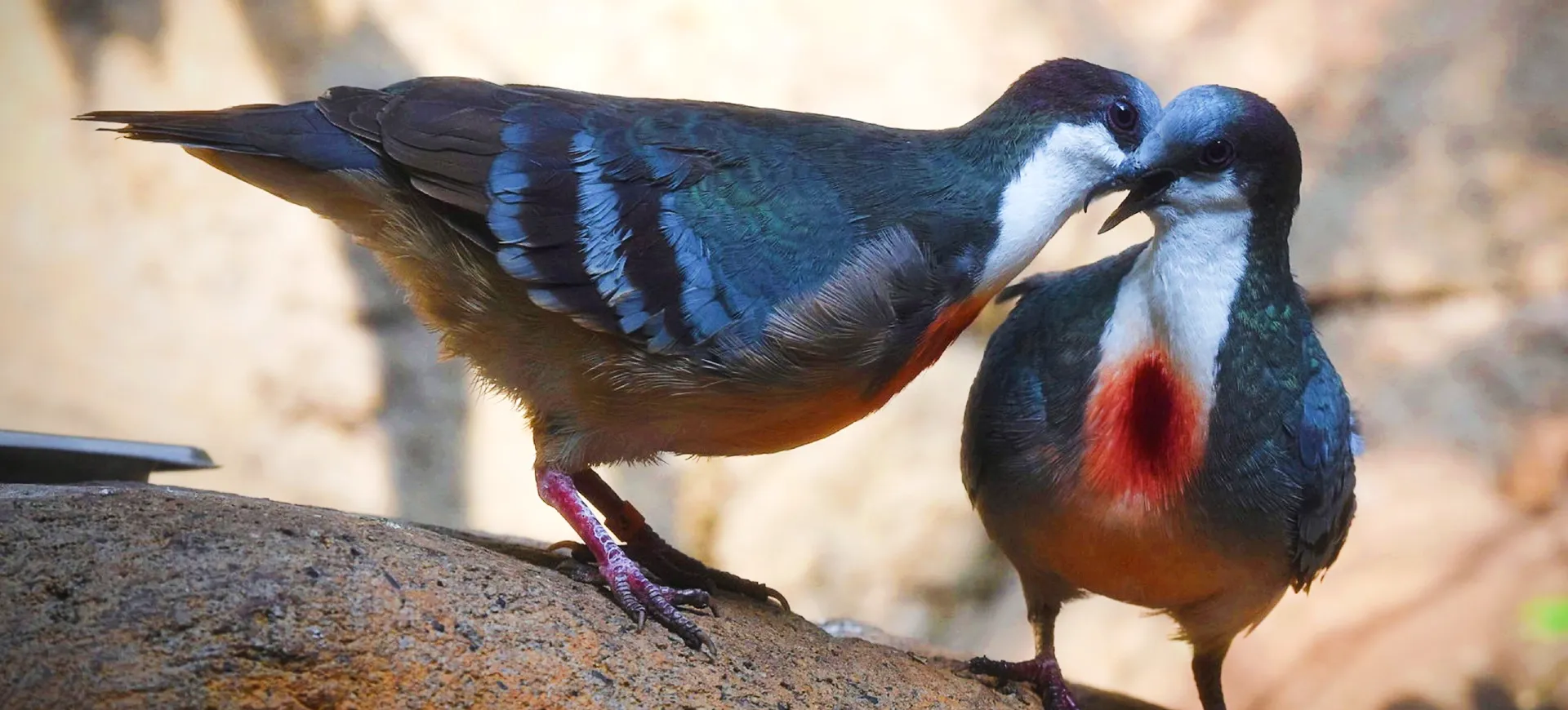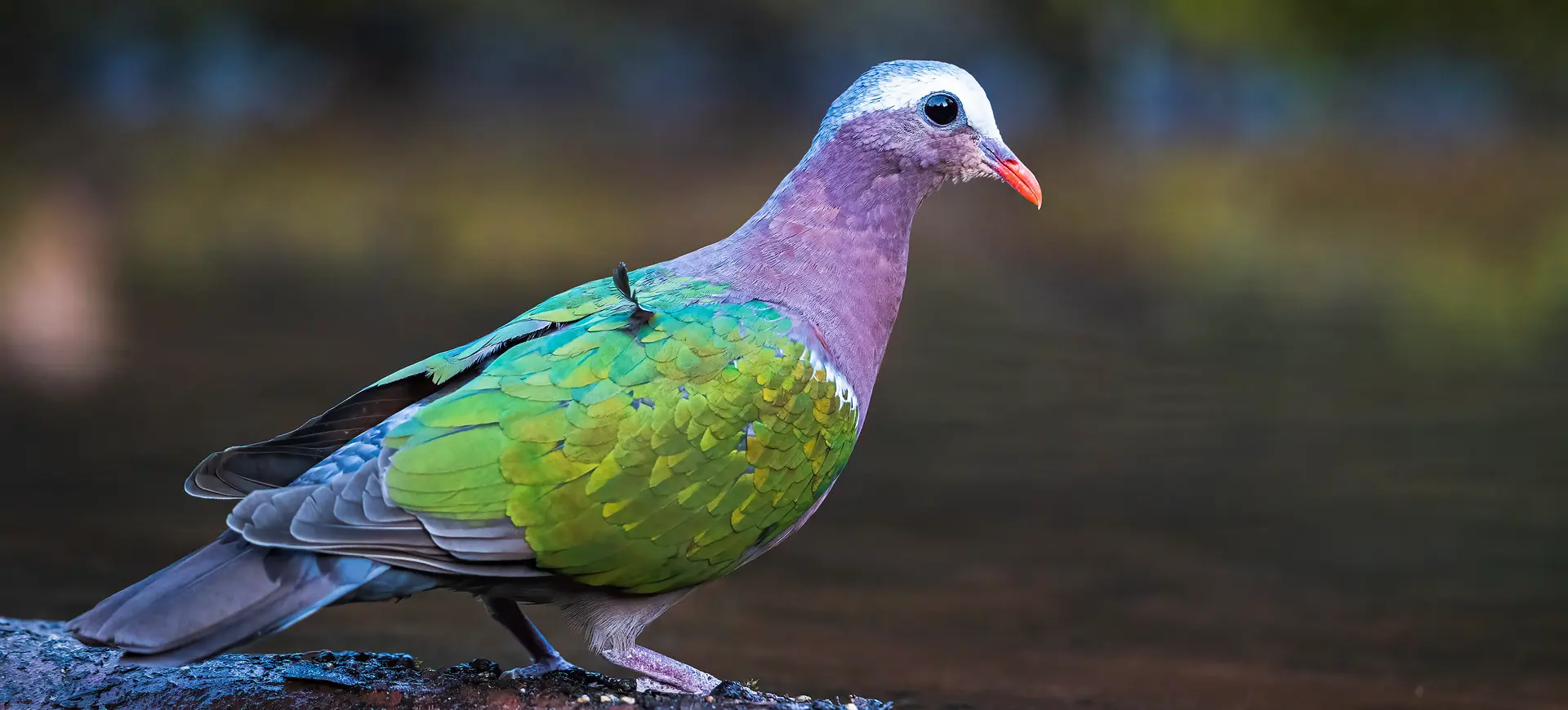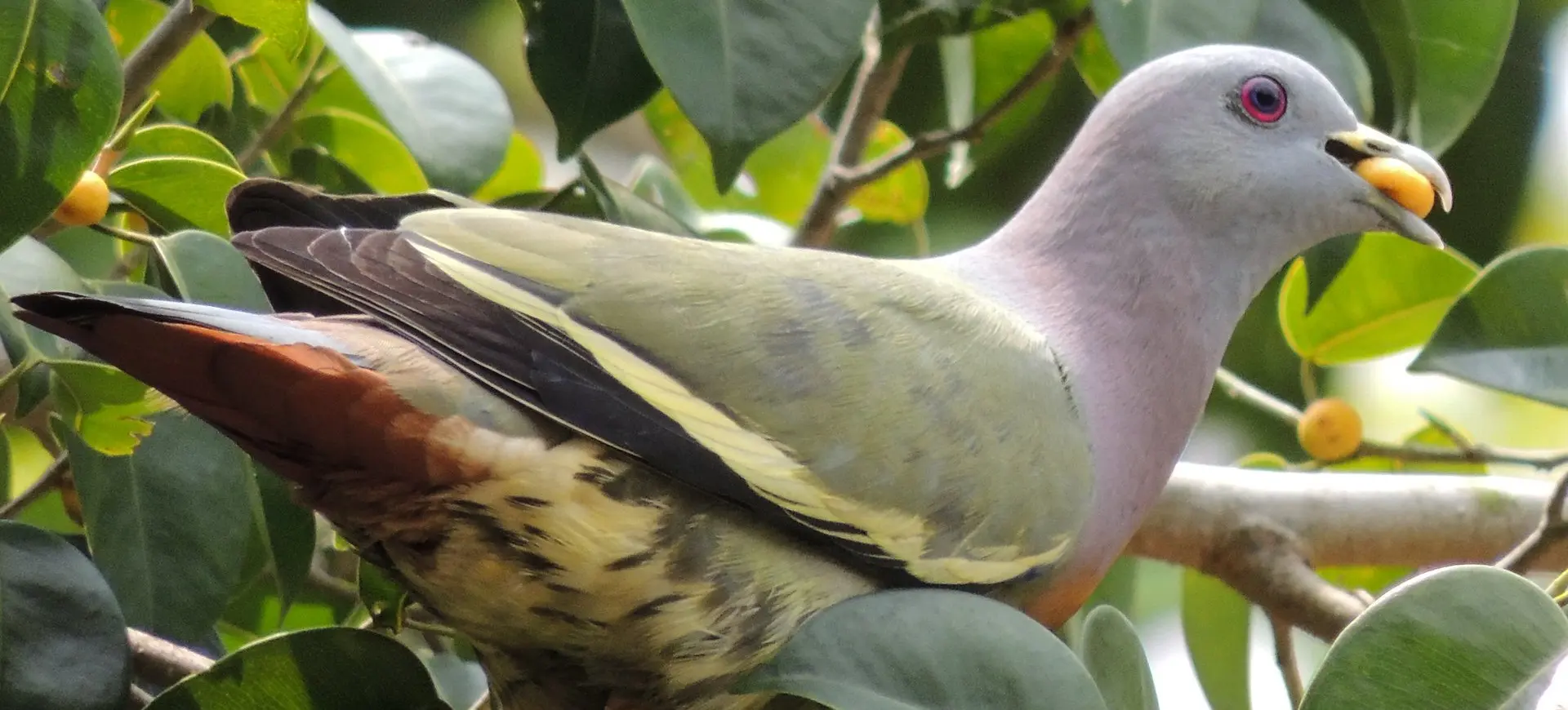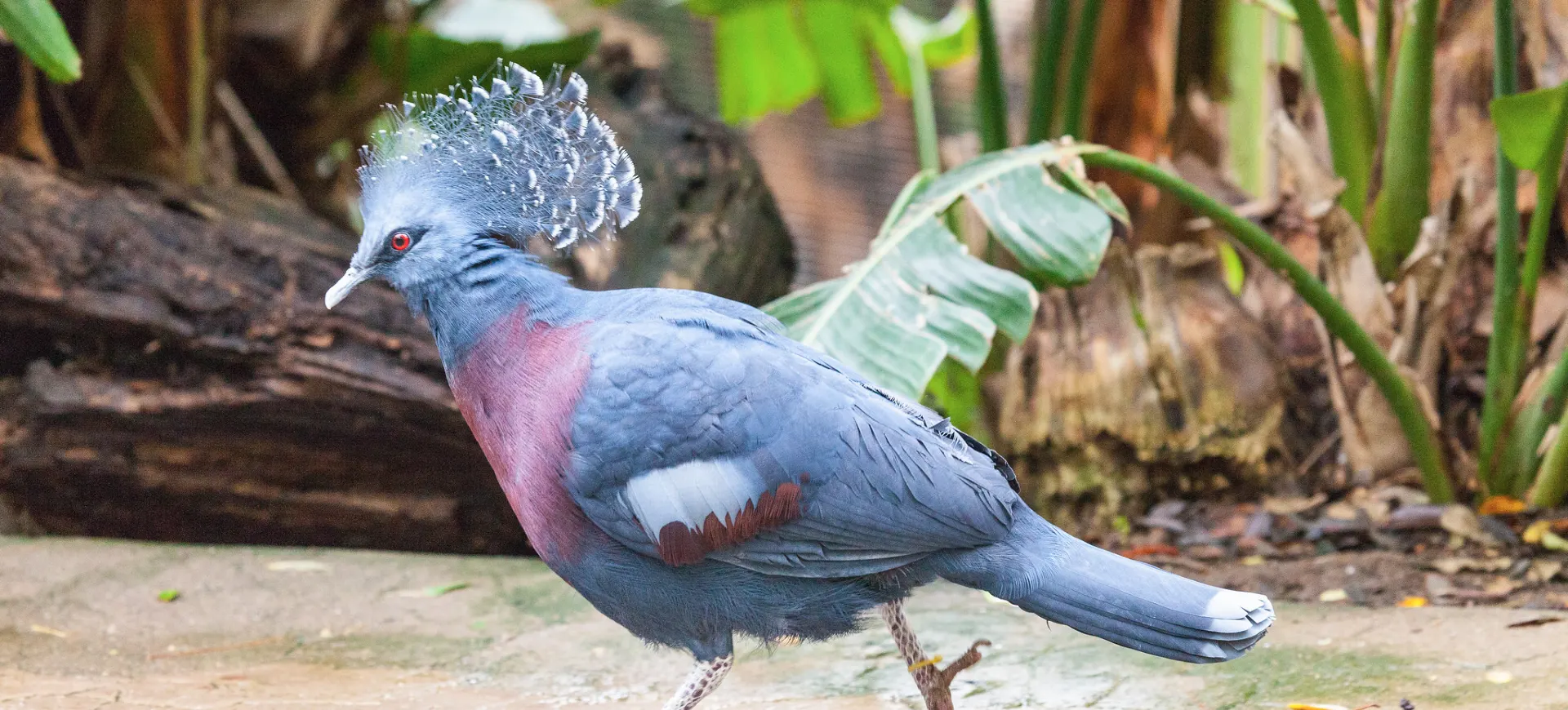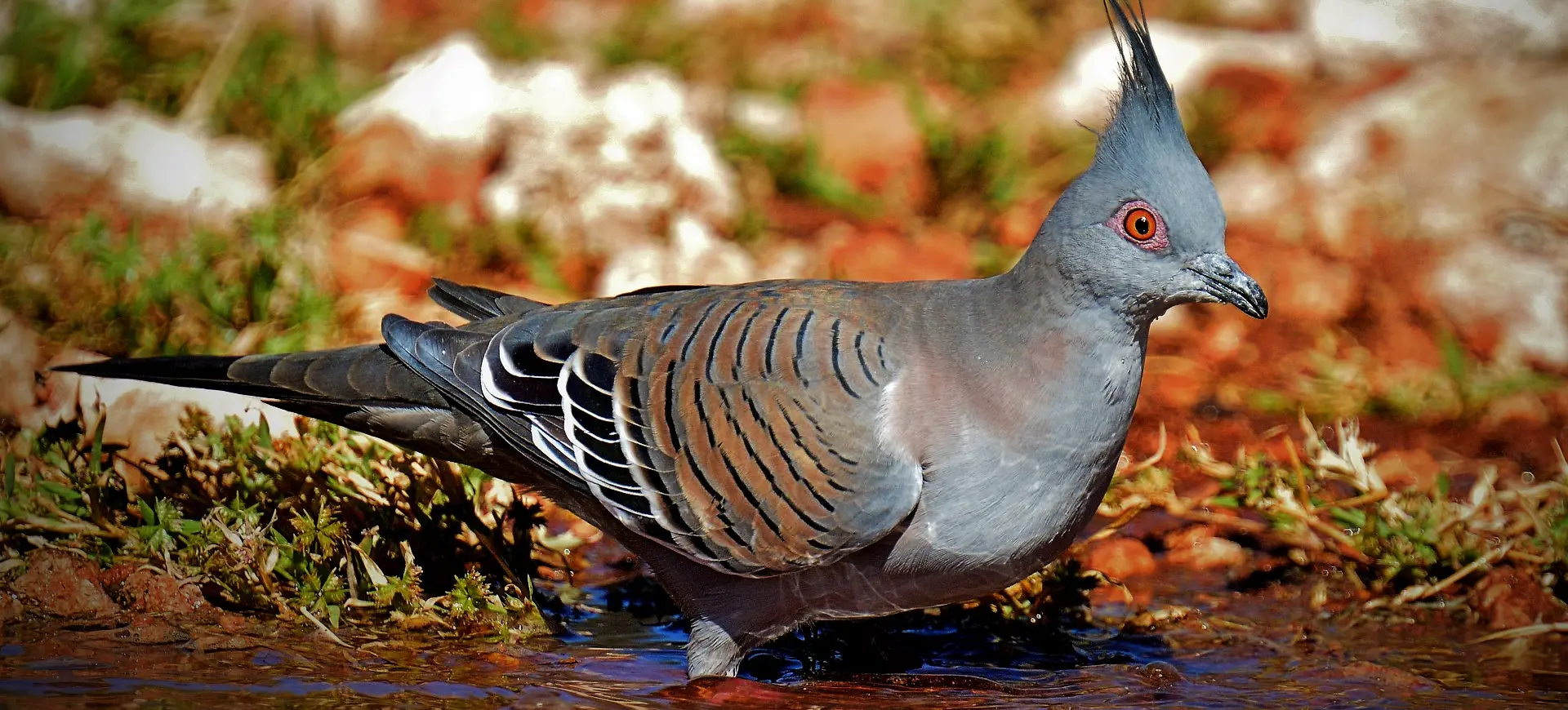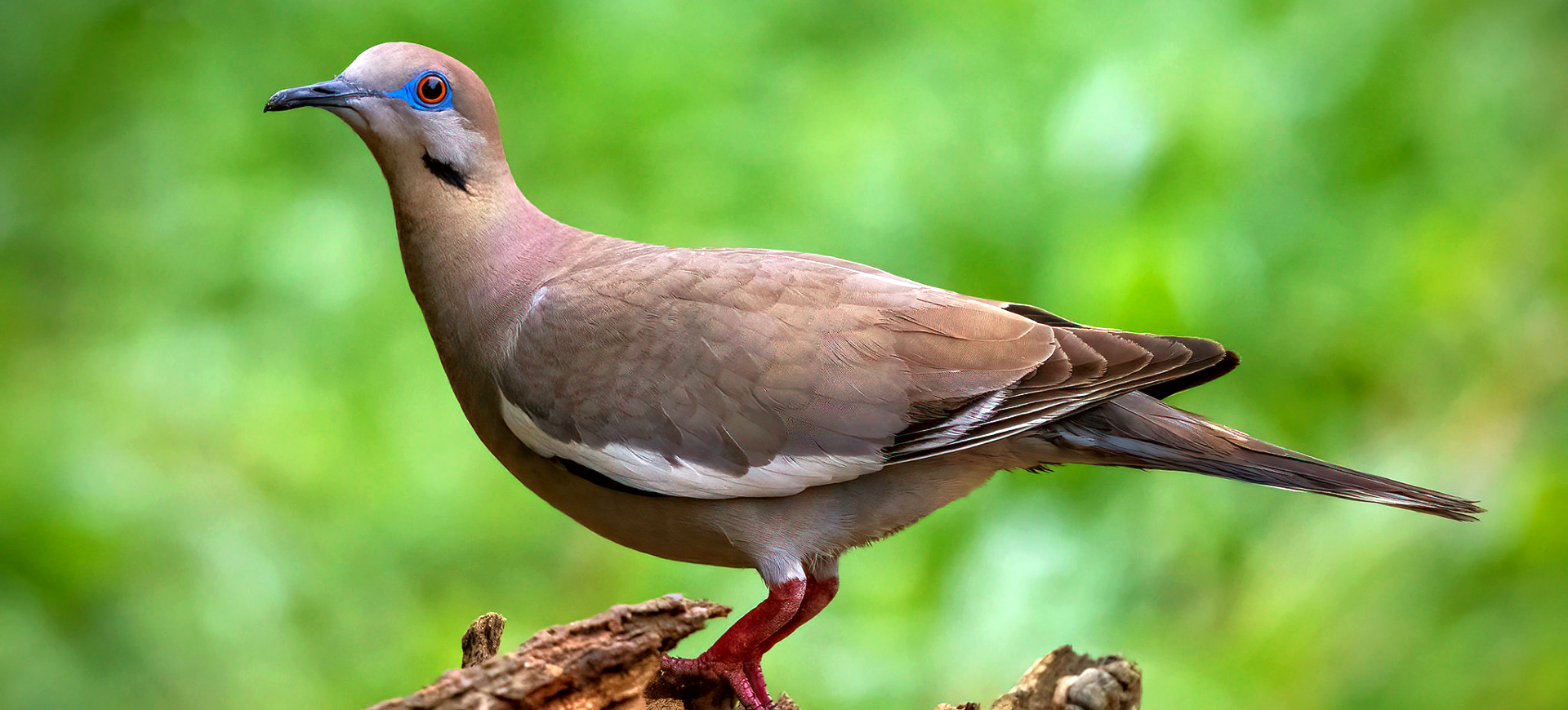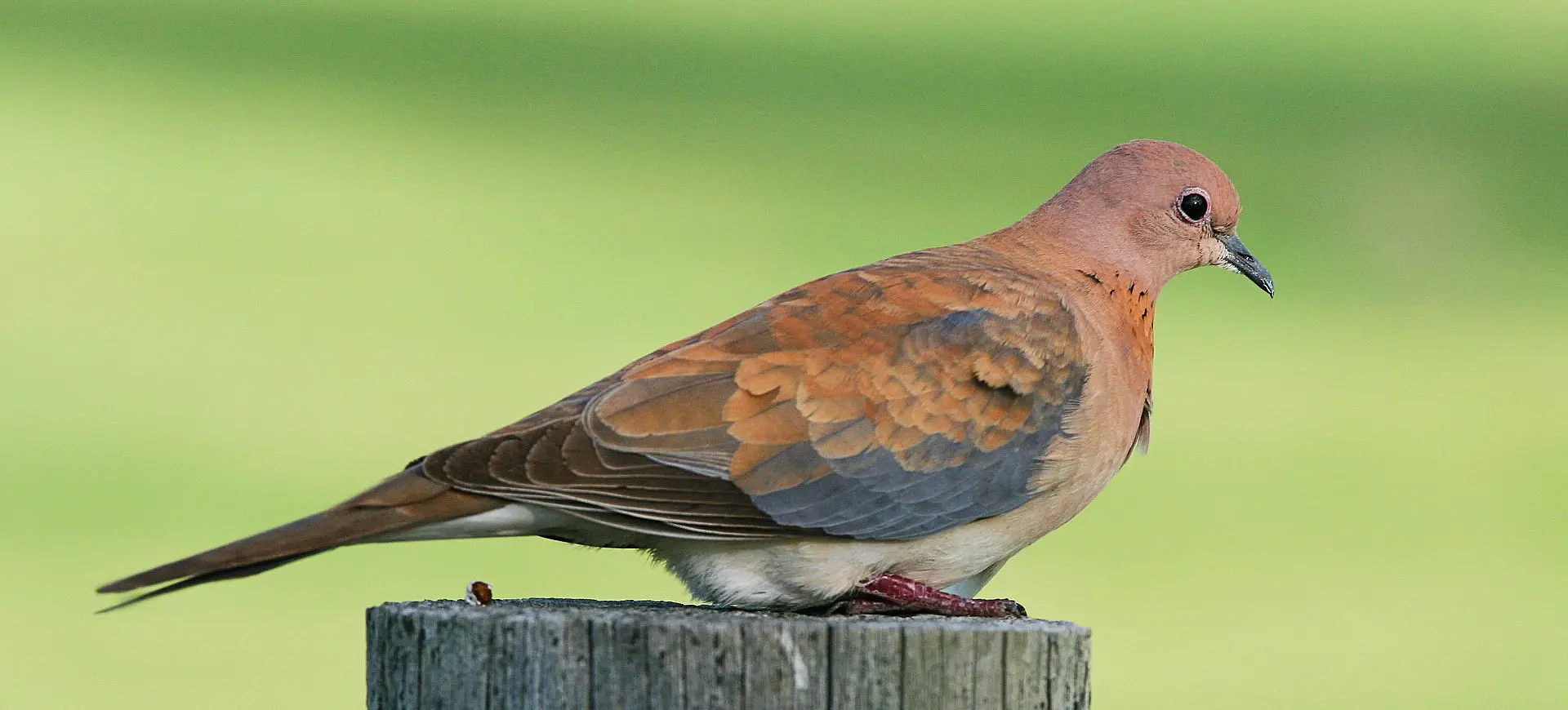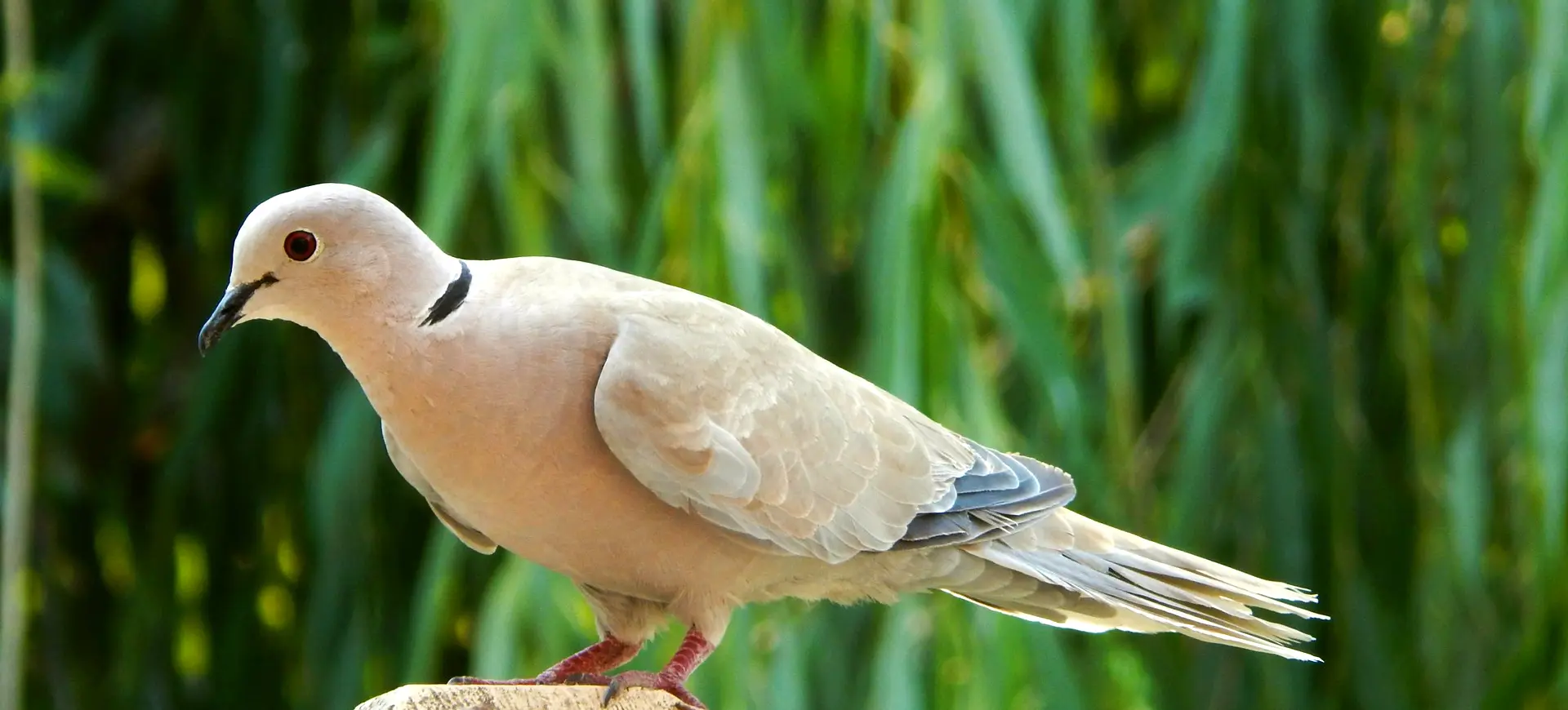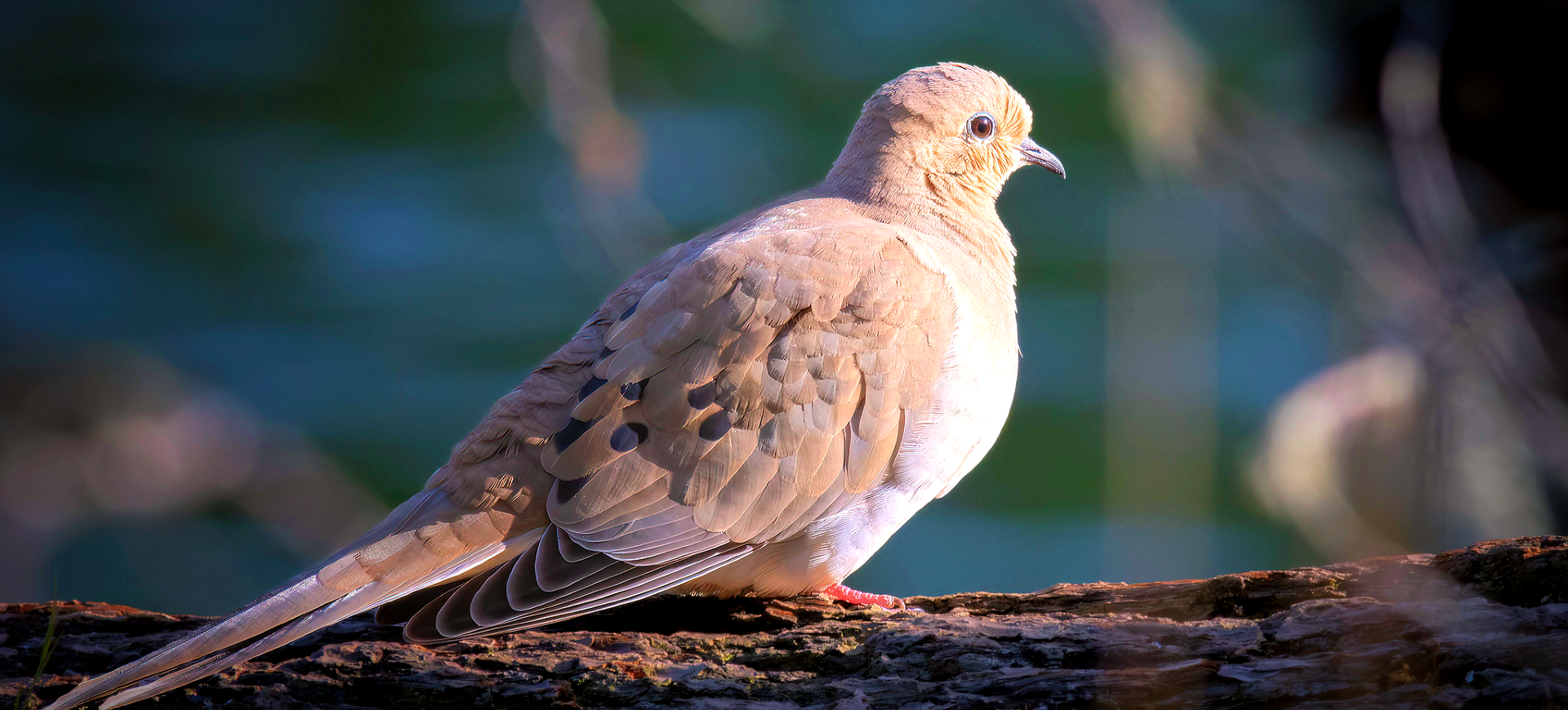Overview
The Nicobar Pigeon (Caloenas nicobarica) is a remarkable bird species known for its iridescent plumage that ranges from green and copper to blue. It is the closest living relative of the extinct Dodo bird. Native to the Nicobar Islands, parts of Southeast Asia, and the Solomon Islands, this pigeon is a nomadic species that travels in flocks from one island to another in search of food.
Primarily frugivorous, the Nicobar Pigeon feeds on various fruits, seeds, and some invertebrates. Its strong gizzard allows it to consume hard seeds, contributing to seed dispersal in its native habitats. The bird is particularly fond of figs and palm fruits, which comprise a significant portion of its diet.
The Nicobar Pigeon is a shy and elusive bird, often found in dense forests and mangroves. It is most active during the early morning and late afternoon, avoiding the day’s heat. The species is known for its low, repetitive calls, usually heard at dawn and dusk. It is a strong flier, capable of covering long distances between islands.
Taxonomy
Kingdom
Phylum
Class
Order
Family
Genus
Species
Type
Physical Description:
The Nicobar Pigeon is a medium-sized bird with a robust body and short legs. Its most striking feature is its iridescent plumage, which changes color depending on the angle of light. The bird has a white tail and dark-colored wings, contrasting sharply with its vibrant body feathers.
The bird’s beak is short and stout, well-suited for its frugivorous diet. The Nicobar Pigeon has red eyes and a small, black knob on its bill, which is more prominent in males. The species exhibits little sexual dimorphism, making it challenging to distinguish between males and females based solely on appearance.

Lifespan: Wild: ~12 years || Captivity: ~15 years

Weight: Male: 17.6–18.7 oz (500–530 g) || Female: 16.2–17.6 oz (460–500 g)

Length: Male: 15–16 inches (38–41 cm) || Female: 14–15 inches (36–38 cm)

Wingspan: Male & Female: 18–20 inches (46–51 cm)

Top Speed: 30 mph (48 km/h)
Characteristic:
Native Habitat:
The Nicobar Pigeon is native to the Nicobar Islands, but its range extends to various regions in Southeast Asia, including the Andaman Islands, the Philippines, and parts of Indonesia. It prefers forested islands and coastal regions, with access to various fruits and seeds. The bird is also found in mangrove forests, providing food and shelter.
The species is highly adaptable and can thrive in a variety of habitats. However, it is most commonly found in regions with plenty of cover and food resources. The Nicobar Pigeon is a sedentary species, meaning it does not engage in long migratory patterns but may travel considerable distances in search of food.
Climate Zones:
Biomes:
WWF Biomes:
Biogeographical Realms:
Countries:
Diet:
Diet & Feeding Habits:
The Nicobar Pigeon primarily feeds on fruits and seeds, making it predominantly frugivorous. It has a strong beak allows it to crack open hard-shelled fruits and seeds. The bird often forages on the ground, picking up fallen fruits and occasionally digging for roots. It is also known to consume small invertebrates, such as insects and worms, although these make up a minor part of its diet.
The species is a strong flier and often travels long distances for food. It usually forages in the early morning and late afternoon, avoiding midday heat. The Nicobar Pigeon is a social feeder, often foraging in groups. This social behavior provides safety in numbers and allows the birds to cover more ground when searching for food.
Mating Behavior:
Mating Description:
The Nicobar Pigeon is generally monogamous, forming long-term pair bonds. During the breeding season, males perform elaborate courtship displays, which include puffing up their feathers and cooing to attract females. Nests are usually built in trees or shrubs made of sticks and leaves.
The female typically lays one or two eggs, which both parents incubate for about two weeks. Once hatched, the chicks are altricial and require extensive parental care. They are fed “crop milk,” a secretion from the parents’ crops, for the first few days of their lives. The young fledge after about three weeks and become independent shortly after that.
Reproduction Season:
Birth Type:
Pregnancy Duration:
Female Name:
Male Name:
Baby Name:
Social Structure Description:
The Nicobar Pigeon is a social bird that often forms small flocks, especially when foraging or traveling between islands. Within these groups, there is a loose hierarchy, usually based on age and experience. The birds communicate using a variety of vocalizations, including low, repetitive coos that are distinctive to the species.
While generally shy and elusive, the Nicobar Pigeon becomes more gregarious during the breeding season. Males perform elaborate courtship displays to attract females, and both parents share the responsibilities of incubation and chick-rearing. The species is known for its strong pair bonds, often lasting for several breeding seasons.
Groups:
Conservation Status:
Population Trend:
The Nicobar Pigeon is listed as Near Threatened due to habitat loss and hunting. While exact population numbers are unknown, the species is becoming increasingly rare in regions affected by human activity. It is still commonly found in protected areas, where it can access abundant food sources and suitable nesting sites.
Conservation efforts for the Nicobar Pigeon are primarily focused on habitat preservation and anti-poaching measures—several national parks and reserves within its range aim to conserve crucial habitats for this unique species. Ongoing research is being conducted to better understand its needs and behaviors, which will inform future conservation strategies.
Population Threats:
The primary threats to the Nicobar Pigeon are habitat loss due to deforestation and hunting for its meat and feathers. The species is also affected by the introduction of invasive species, such as rats, which prey on its eggs and chicks. While it is not considered endangered, its status as Near Threatened indicates that conservation measures are needed to ensure its survival.
Protected areas within its range offer some level of security, but ongoing monitoring and conservation efforts are essential. Anti-poaching measures and habitat restoration projects are among the strategies to protect this unique bird species. Public awareness campaigns are also being used to educate local communities about the importance of conserving the Nicobar Pigeon.
Conservation Efforts:
Conservation efforts for the Nicobar Pigeon are primarily focused on habitat preservation and anti-poaching measures. Several national parks and reserves within its range aim to conserve crucial habitats for this unique species. These protected areas are monitored to ensure the health and survival of Nicobar Pigeon populations.
Ongoing research is being conducted to better understand the needs and behaviors of this species. This research is crucial for implementing effective conservation strategies, including habitat restoration and anti-poaching measures. Public awareness campaigns are also being used to educate local communities about conserving this unique species.
Additional Resources:
Fun Facts
- The Nicobar Pigeon is the closest living relative of the extinct Dodo bird.
- It has iridescent plumage that changes color depending on the angle of light.
- The species is nomadic, often traveling long distances between islands for food.
- It has a strong gizzard allows it to consume hard seeds, contributing to seed dispersal.
- The Nicobar Pigeon is known for its low, repetitive coos, usually heard at dawn and dusk.
- It is a strong flier, capable of covering long distances in a single day.
- The bird is primarily frugivorous but also consumes
- The Nicobar Pigeon is generally monogamous, forming long-term pair bonds.
- The species is most active during the early morning and late afternoon, avoiding the day’s heat.
- The Nicobar Pigeon’s strong gizzard allows it to consume hard seeds, making it an important agent for seed dispersal in its native habitats.






